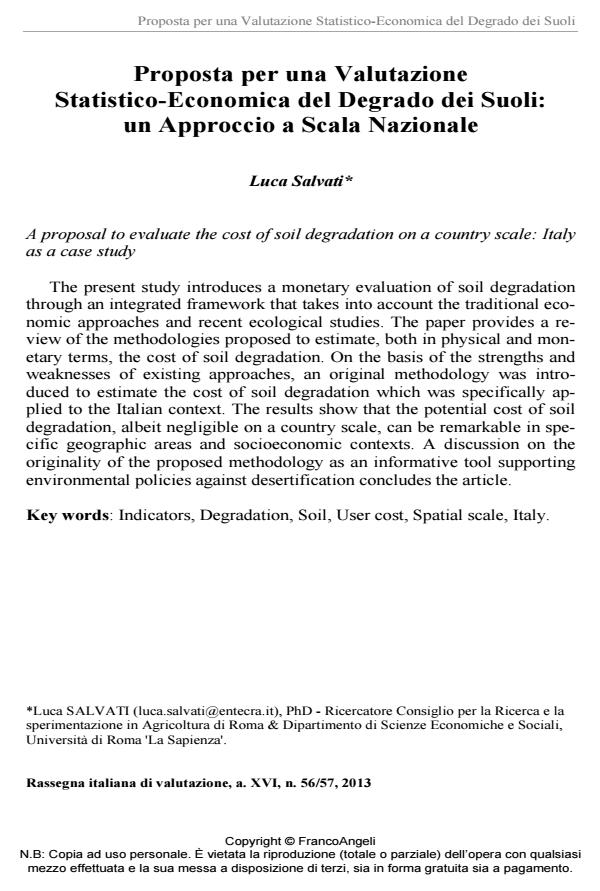A proposal to evaluate the cost of soil degradation on a country scale: Italy as a case study
Journal title RIV Rassegna Italiana di Valutazione
Author/s Luca Salvati
Publishing Year 2014 Issue 2013/56-57
Language Italian Pages 32 P. 312-343 File size 671 KB
DOI 10.3280/RIV2013-056014
DOI is like a bar code for intellectual property: to have more infomation
click here
Below, you can see the article first page
If you want to buy this article in PDF format, you can do it, following the instructions to buy download credits

FrancoAngeli is member of Publishers International Linking Association, Inc (PILA), a not-for-profit association which run the CrossRef service enabling links to and from online scholarly content.
The present study introduces a monetary evaluation of soil degradation through an integrated framework that takes into account the traditional economic approaches and recent ecological studies. The paper provides a review of the methodologies proposed to estimate, both in physical and monetary terms, the cost of soil degradation. On the basis of the strengths and weaknesses of existing approaches, an original methodology was introduced to estimate the cost of soil degradation which was specifically applied to the Italian context. The results show that the potential cost of soil degradation, albeit negligible on a country scale, can be remarkable in specific geographic areas and socioeconomic contexts. A discussion on the originality of the proposed methodology as an informative tool supporting environmental policies against desertification concludes the article.
Keywords: Indicators, Degradation, Soil, User cost, Spatial scale, Italy.
Luca Salvati, Proposta per una Valutazione Statistico-Economica del Degrado dei Suoli: un Approccio a Scala Nazionale in "RIV Rassegna Italiana di Valutazione" 56-57/2013, pp 312-343, DOI: 10.3280/RIV2013-056014